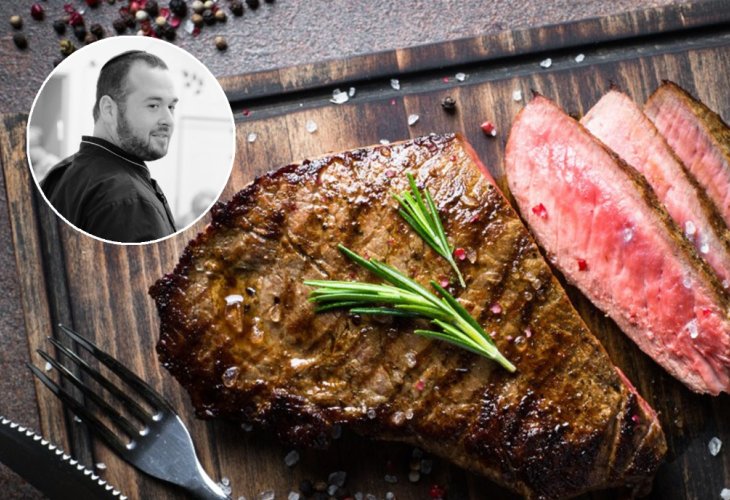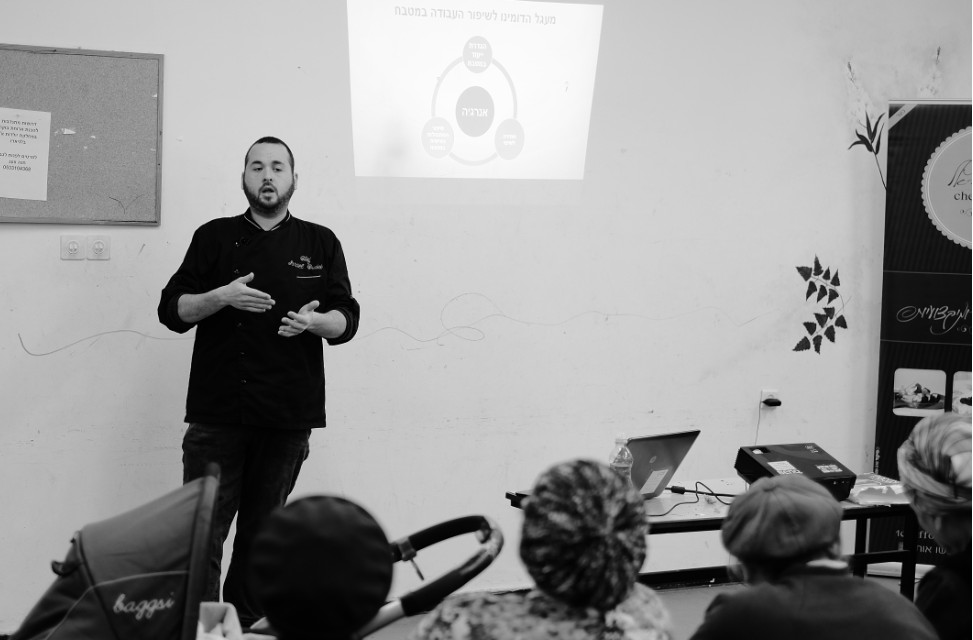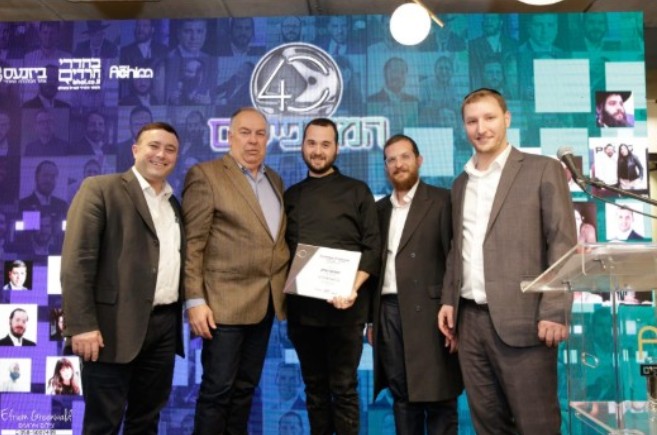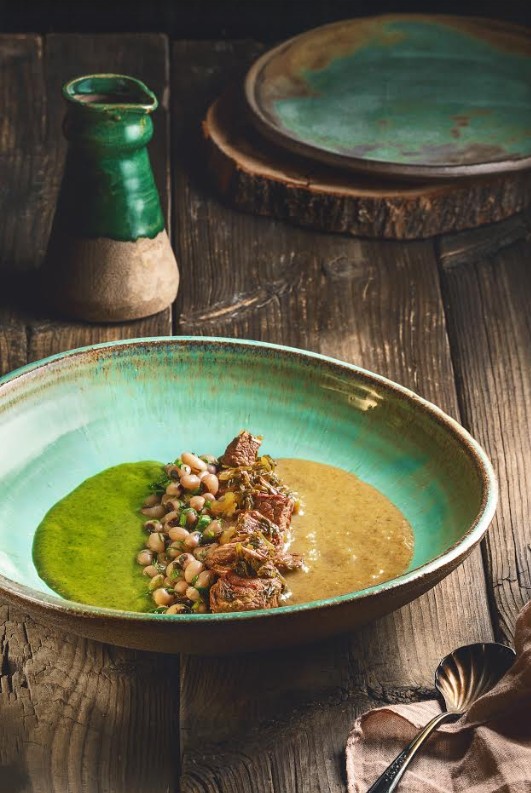Just Before Purim: Chef Yisrael Dudek Shares All the Tips for Perfect Meat Cooking
Preparing meat for the Purim feast and unsure about which cut to use? Worried about messing up the cooking? Wondering about the recommended cooking time and how to make the meat tender and delicious? Chef Yisrael Dudek has all the tips and advice for preparing meat. Happy holiday!
 (Photo: shutterstock) Inset: Chef Yisrael Dudek
(Photo: shutterstock) Inset: Chef Yisrael Dudek"For years, people would ask me questions like: 'I bought a cut of meat, and I don't know how to cook it', or 'I want to prepare meat in a festive style, and I'm tired of the usual recipes. Do you have anything more special to offer?' and things of this nature," says Chef Yisrael Dudek. "When I examined these questions, I concluded that many people lack basic understanding about cooking meat. Most people look at it as an intimidating task that they will never do well, or something that tends to be complicated. In my opinion, it doesn't have to be that way at all, and that's what led me to engage in this field, to offer detailed guidance, and even to write a book on the topic."
Dudek tells us this on the eve of Purim, a holiday where it is a mitzvah to indulge in meat and wine. "There's no need to be scared of preparing meat," he reiterates, "you just need to know how to do it."
You mention it as a complex task, but some people feel differently. For them, why not just take the regular cut from the supermarket and cook it as usual?
"There is a common mistake here," asserts Dudek, "it is known that the most sold cut is number 5, and its price is accordingly high. You can find it in some stores for 150 shekels per kilo, without any justification. On the other hand, the front part of the cow, which is entirely meant for long cooking, contains parts that can cost only 40 or 50 shekels, and they are no less good than cut number 5. Sometimes they are even tastier, but due to a lack of knowledge, people simply skip them."

Lengthening the Cooking for Taste Success
Just before entering the kitchen, Dudek seeks to debunk some stigmas. "Some people insist on purchasing fresh meat for the feast," he claims. "I researched this topic and examined it closely. My clear conclusion is that there is no taste difference between frozen and fresh meat. Frozen meat is not less tasty."
And what about kosher? Is it true that many tasty meats are not strictly kosher?
"This is also an incorrect stigma. I have worked for years with all types of kosher certifications, including the strictest ones, and there wasn't a kosher certification under which I had to compromise on taste."
Both of these points, he says, relate to meats intended for long cooking, which typically feature in the Purim feast."
Tell us, what meat is recommended for us to prepare for the feast that will be soft, delicious, and honor the important holiday?
"I will give you a recipe suitable for all types of cuts that I frequently prepare, and whichever cut I use, it exceeds expectations. Since it involves very long cooking, I call it 'place the cut in the oven and go to sleep'. Dudek pauses for a moment and then drops the bombshell: "The preparation time for the recipe is five minutes, but the cooking time is between 8 to 14 hours."

14 hours? I think at this stage, many will decide to quit...
"Before you give up, it's important for me to explain how I reached such a calculation of hours and why there is such a significant time difference. You need to understand that when you prepare this meat, you should start from the assumption that meat is essentially muscle containing fluids. If you take, for example, a water-soaked towel and put it in the washing machine, the more the machine spins powerfully, the more water will come out, and you'll get a dry towel. Just like in meat, the higher we raise the cooking temperature, the quicker the fluids come out, and we'll get drier meat. If we want moist and juicy meat, it's better to lower the temperature. So if we consider that cooking meat at 180 degrees takes about three hours, then by lowering the cooking temperature to 120 degrees, we arrive at around 14 hours. Such a temperature will ensure us soft, juicy, slightly moist meat that's rich in flavors. By the way, at my house, the ovens usually work overnight. I put the meat in the oven in the evening, and in the morning, I take it out and finish it."
Regarding seasoning, how would you recommend we season the meat?
"My recommendation is to place the cut in a pan and spread a 'binding agent' on it - something that will adhere the dry spices to the meat cut. You can use oil, mustard, honey, or silan, or any other spread you like. Then season according to taste with salt and it is highly recommended with ground black pepper, you can use all types of mustard seeds, coriander seeds, smoked and regular paprika, and you can also add spices that come in mixes. Those who want can cook with onions, or vegetables, but that's not part of the seasoning, rather an addition."
"Then add liquids to the pan, with the exact amount depending on the juiciness of the cut. If it's lean cuts, add a larger amount of liquids, while for fatty cuts, add less. For example, if we chose a shoulder cut number 4 considered lean, we should add water up to half of the pan's height, or even more. For asado, in contrast, we should add a quarter of the pan's height."
Dudek clarifies that he tends to add only water, but for those who like seasoning with wine, this is exactly the place to use it. "Then you need to seal the pan, and it is important that it is sealed so tightly that there is no chance for the steam to escape. You can use dedicated utensils for this, like special pans with a tight lid, or you can also use a disposable pan and cover it with parchment paper and two layers of aluminum foil. Besides the hermetic sealing ensuring the steam doesn't 'escape', it also softens the strong heat impact coming from the oven."
"Place the pan in the center of the oven and initially heat it at 200 degrees for half an hour. The goal here is to escape a temperature that might endanger the food, as when it heats at a low temperature, between 55 to 72 degrees, the bacteria present in it multiply, so you should strive to be at this temperature as little as possible. After half an hour, you can lower to the temperature you chose, for the long cooking. By the way, you should keep in mind that there are types of meats that even after 14 hours of baking at 120 degrees, will not be tender enough. There's no need to panic, just cover it back, add another 20 degrees, continue to bake for an hour or two, and get the meat exactly as needed."
Dudek wants to add an important note: "When we cook the meat as a whole cut, the seasoning never penetrates deeply, so the center of the meat won't get the taste. My recommendation is to cut the meat after baking ends, then continue to cook it for about half an hour with the sauce, so the spices penetrate deeply, and the meat gets the rich taste."
 Yisrael Dudek at the '40 Most Influential in the Haredi Sector Economy' ceremony
Yisrael Dudek at the '40 Most Influential in the Haredi Sector Economy' ceremony
Prolonged Cooking Not Always Required
Not everyone wants long recipes of 14 hours. What can you recommend for those who have at most two or three hours for cooking meat?
"For such people, I would first of all recommend cutting the meat into cubes, so it softens quickly and one can easily get ready meat within an hour and a half to two hours. If you choose to cut into cubes, it's recommended to fry them before cooking. The frying should be done after the cubes are dipped in a little flour, for added crispiness. In fact, there are two purposes to frying: the first is for aesthetics, as the meat looks better, and also our eyes eat... the second purpose is to create 'the Maillard effect'. This is essentially the browned color the meat gets, which brings its own flavors. After the initial frying, you can take the meat cubes and continue seasoning them in the pot, submerge in liquid, and bring to a boil on the fire."
And if we want to prepare meats on the grill or barbecue, what can you recommend?
"Here, it is important to discuss the subject of 'butchering'. In the country, butchers use traditional butchering, where they adapt most parts of the meat mainly for long cooking, except for the entrecôte which is suitable for short cooking. However, it's important to know that there are other types of butchering, such as American, French, and others, where you can find cuts for short cooking even from the cow's front part, like steak cut from rib number 2 – a unique tasting part, or 'iron steak' – a cut from shoulder roast number 5 prepared for such grilling, and you can also find cut number 7 from which you can sear juicy steaks or even skewers. The cost of all the parts I've mentioned here is very low, and when preparing meat on a grill or barbecue, they are a treasure - easy, quick, and simple preparation, where it's enough to just sear the sides to achieve a wonderful taste. It's worth trying, and there is no need to insist on the familiar and expensive meat."

Although we are talking about the Purim feast, we can't talk about meat without mentioning hamin meat. It's an opportunity to ask – are there special recommendations?
"Hamin meat is one of the topics that often sparks discussions", agrees Dudek, "I research it every time anew, and it's nothing short of fascinating. Following extensive research I conducted on hamin, I can say there is no definitive answer regarding the preferred type of meat because it varies according to taste. There are those who prefer a lighter hamin, and those who connect more with heavier and significant cuts. Personally, I love the combination, and when I prepare hamin, I typically combine two types of meats. These can be neck and ribs, or neck and asado, or even head and shoulder, with the intention of mixing slightly fattier meat with relatively dry meat. Another important recommendation for hamin is to add bones, and for those seeking a challenge, adding lamb meat is an option, which spreads amazing scents throughout the house. However, this is only suitable for those who like the taste, as it is completely different from the familiar."

